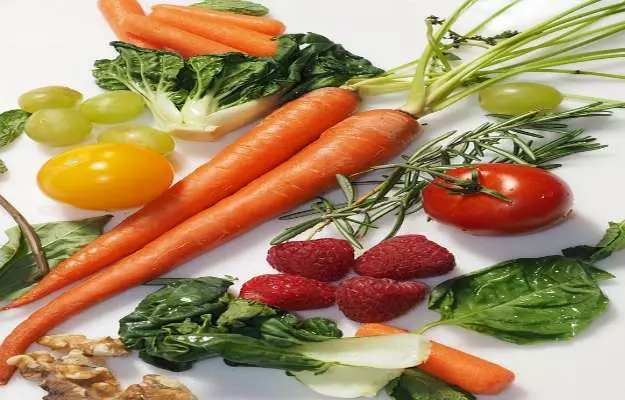1
Critical Care & Emergency / These 5 common habits are silently killing your gut health
« on: December 07, 2025, 03:23:49 PM »
These 5 common habits are silently killing your gut health:

1. Black coffee on an empty stomach
Skipping breakfast and just drinking black coffee is great for fat loss, right?
While it might help you consume fewer calories...
It makes your stomach more acidic and can irritate your gut lining.
Instead, eat a breakfast that's:
- Nutritious
- Low calorie
- High protein
Like greek yoghurt or eggs and fruit.
2. Consuming seed oils.
They're in nearly EVERYTHING.
If the food's in a packet, it's probably got seed oils.
They wreak havoc on your gut and the rest of your body with inflammation:
Make sure to use cooking oils like:
- Ghee
- Olive oil
- Coconut oil.
Just look at the difference between how seed oils are made versus natural fats like butter:
To avoid seed oils in your food, focus on single ingredient whole foods like:
- Fish
- Rice
- Fruit
- Eggs
- Dairy
- Meat
- Vegetables.
3. Consuming processed sugar.
It promotes the growth of harmful bacteria in the gut which is linked to inflammation and Type 2 Diabetes.
But it's only processed sugar.
Even worse?
The more sugar you consume, the more sugar-craving gut bacteria you build up.
This makes you CRAVE sugar even more.
A vicious cycle.
4. Not getting enough sleep.
- Slows digestion
- Gut lining heals less
- Reduces gut microbiome diversity
- Worse function of the gut-brain axis
- Inflammation which harms gut lining
- Affects hormones that affect the gut.
Common things that ruin your sleep:
- Going to bed late
- Waking up with an alarm
- Eating too close to bedtime (evening snacks)
Fix those, make your bedroom dark & cool, and take these supplements:
5. Sedentary lifestyle.
Exercise:
- Reduces stress
- Reduces gut inflammation
- Improves the gut microbiome.
- Produces short-chain fatty acids that strengthen the gut lining.
Only train 2 hours/week so you're consistent.
Focus on compound exercises and going close to failure.
Use intensity techniques like supersets and dropsets to save even more time.
Just walking more has other benefits too:
Poor gut health is linked to obesity, worse mental health, and chronic diseases.
But you just need to follow these tips and eat healthily, exercise, and sleep well to protect yourself.
1. Black coffee on an empty stomach
Skipping breakfast and just drinking black coffee is great for fat loss, right?
While it might help you consume fewer calories...
It makes your stomach more acidic and can irritate your gut lining.
Instead, eat a breakfast that's:
- Nutritious
- Low calorie
- High protein
Like greek yoghurt or eggs and fruit.
2. Consuming seed oils.
They're in nearly EVERYTHING.
If the food's in a packet, it's probably got seed oils.
They wreak havoc on your gut and the rest of your body with inflammation:
Make sure to use cooking oils like:
- Ghee
- Olive oil
- Coconut oil.
Just look at the difference between how seed oils are made versus natural fats like butter:
To avoid seed oils in your food, focus on single ingredient whole foods like:
- Fish
- Rice
- Fruit
- Eggs
- Dairy
- Meat
- Vegetables.
3. Consuming processed sugar.
It promotes the growth of harmful bacteria in the gut which is linked to inflammation and Type 2 Diabetes.
But it's only processed sugar.
Even worse?
The more sugar you consume, the more sugar-craving gut bacteria you build up.
This makes you CRAVE sugar even more.
A vicious cycle.
4. Not getting enough sleep.
- Slows digestion
- Gut lining heals less
- Reduces gut microbiome diversity
- Worse function of the gut-brain axis
- Inflammation which harms gut lining
- Affects hormones that affect the gut.
Common things that ruin your sleep:
- Going to bed late
- Waking up with an alarm
- Eating too close to bedtime (evening snacks)
Fix those, make your bedroom dark & cool, and take these supplements:
5. Sedentary lifestyle.
Exercise:
- Reduces stress
- Reduces gut inflammation
- Improves the gut microbiome.
- Produces short-chain fatty acids that strengthen the gut lining.
Only train 2 hours/week so you're consistent.
Focus on compound exercises and going close to failure.
Use intensity techniques like supersets and dropsets to save even more time.
Just walking more has other benefits too:
Poor gut health is linked to obesity, worse mental health, and chronic diseases.
But you just need to follow these tips and eat healthily, exercise, and sleep well to protect yourself.






